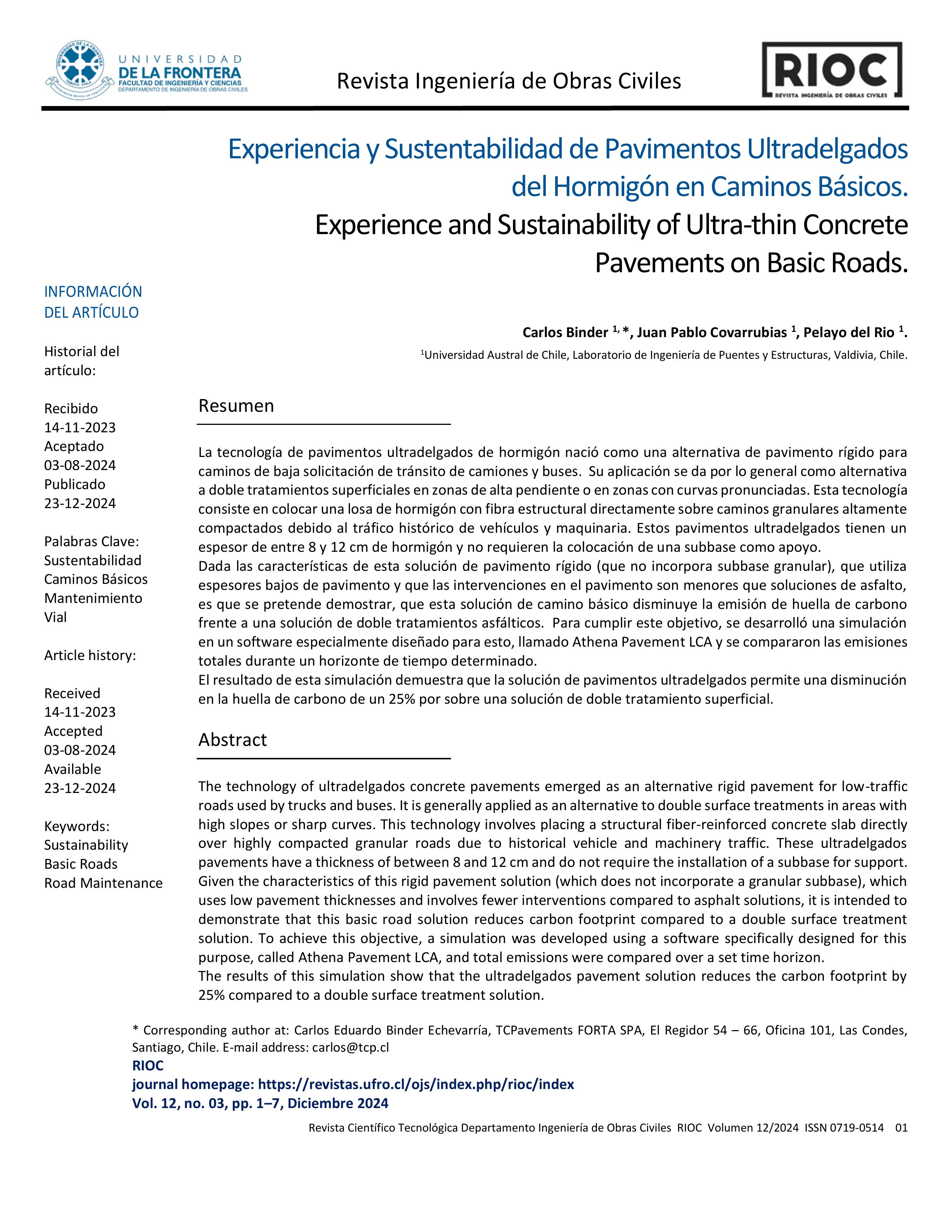Experience and Sustainability of Ultra-thin Concrete Pavements on Basic Roads
Keywords:
Sustainability, Basic Roads, Road MaintenanceAbstract
The technology of ultradelgados concrete pavements emerged as an alternative rigid pavement for low-traffic roads used by trucks and buses. It is generally applied as an alternative to double surface treatments in areas with high slopes or sharp curves. This technology involves placing a structural fiber-reinforced concrete slab directly over highly compacted granular roads due to historical vehicle and machinery traffic. These ultradelgados pavements have a thickness of between 8 and 12 cm and do not require the installation of a subbase for support.
Given the characteristics of this rigid pavement solution (which does not incorporate a granular subbase), which uses low pavement thicknesses and involves fewer interventions compared to asphalt solutions, it is intended to demonstrate that this basic road solution reduces carbon footprint compared to a double surface treatment solution. To achieve this objective, a simulation was developed using a software specifically designed for this purpose, called Athena Pavement LCA, and total emissions were compared over a set time horizon.
The results of this simulation show that the ultradelgados pavement solution reduces the carbon footprint by 25% compared to a double surface treatment solution.
Downloads

Downloads
Published
How to Cite
Issue
Section
License
Copyright (c) 2024 Carlos Binder , Juan Pablo Covarrubias , Pelayo del Rio

This work is licensed under a Creative Commons Attribution 4.0 International License.
The authors who publish in this journal accept the following conditions:
- The authors retain the copyright and assign to the magazine the right of the first publication, with the work registered with the Creative Commons attribution license, which allows third parties to use the published information whenever they mention the authorship of the work and the First publication in this journal.
- Authors may make other independent and additional contractual arrangements for non-exclusive distribution of the version of the article published in this journal (eg, include it in an institutional repository or publish it in a book) as long as it clearly indicates that the work Was first published in this magazine.
- Authors are encouraged and encouraged to publish their work on the Internet (for example, on institutional or personal pages) before and during the review and publication process, as it can lead to productive exchanges and a greater and faster dissemination of work Published (see The Effect of Open Access).







